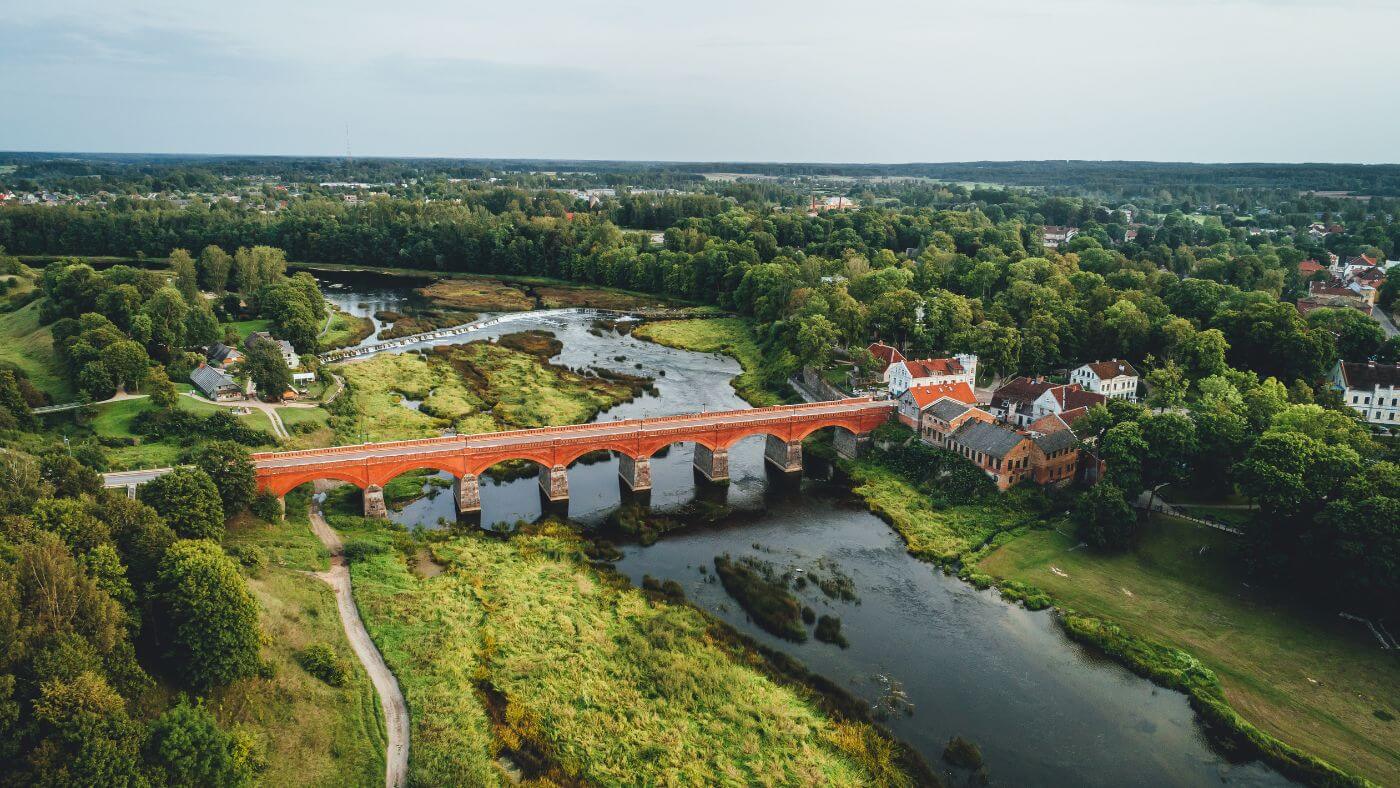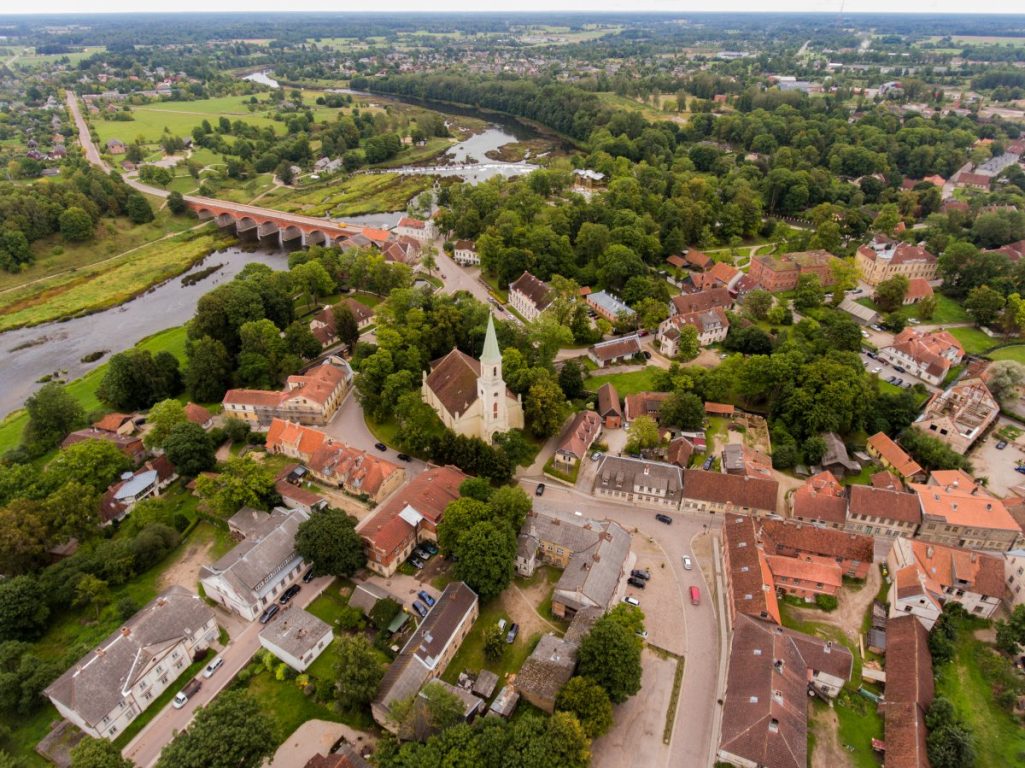



Kuldīga is a town in the Courland region of Latvia, in the western part of the country. It is the center of Kuldīga Municipality with a population of approximately 13,500. Kuldīga was first mentioned in 1242. It joined the Hanseatic League in 1368.
UNESCO World Heritage Candidate: Its well-preserved 17th–18th century architecture is unique in the Baltics
Nature + History: Combines cobbled streets and medieval charm with natural wonders
Ideal for slow travel, couples, photographers, and anyone seeking peace away from the cities
By car: ~2.5 hours (~150 km) via A10 and P108 highways
By bus: Several daily routes from Riga International Bus Station (~3.5–4 hours)
There’s no train service to Kuldīga, making car or bus the main options.
Ventas Rumba – Europe’s widest natural waterfall (249 meters); stunning year-round, especially in spring when fish leap upstream
Kuldīga Brick Bridge – Built in 1874, one of Europe’s longest brick bridges; perfect for sunset walks and photos
Aleksupīte River – A tiny river flowing through the old town, sometimes called the “Latvian Venice”
Riežupe Sand Caves – Latvia’s longest sand cave system, just outside the town
Kuldīga Old Town – Wander cobbled streets lined with red-tile roof houses and Art Nouveau buildings
St. Catherine’s Church – A beautiful Lutheran church from the 17th century
Kuldīga Town Hall Square – Central spot with cafes and cultural events.
Walk along Ventas Rumba and dip your feet in the river
Explore small galleries and craft shops selling local ceramics and textiles
Rent a bike to cycle the scenic countryside
Attend cultural events like Kuldīga Short Film Festival or summer concerts in the square
Take a river float tour during warmer months.
Baznīcas Hotel – Boutique hotel in the center, very stylish
Goldingen Rezidence – Elegant suites with views of the town square
Jēkaba Sēta Hotel – A collection of restored historic buildings turned into a comfortable hotel
Airbnbs and Guesthouses – Many charming riverside options available.
Mushroom and game dishes
Freshwater fish (trout, carp)
Local cheeses and honey
Latvian pancakes and berry desserts
Goldingen Room – Stylish bistro serving Italian and local fusion cuisine
Bangert’s – Elegant riverside restaurant with European dishes and terrace views of the waterfall
Pagrabiņš – Cozy cellar restaurant with traditional Latvian fare
The Marmalade – Great brunch, coffee, and cakes in a modern setting.
Preserved heritage: Kuldīga is one of Latvia’s most historically intact towns. Its cobblestone streets and Baroque architecture reflect 17th–18th century life during the Duchy of Courland.
Folk traditions: Seasonal Latvian festivals (like Jāņi, the midsummer solstice) are celebrated with singing, flower crowns, and bonfires.
Local craftspeople still weave, carve, and embroider, keeping centuries-old skills alive.
Kuldīga Art House and smaller galleries host rotating exhibitions by Latvian and international artists.
The town is a center for indie cinema, with events like:
Kuldīga Short Film Festival (spring)
Summer screenings along the river or in the square
Live folk, jazz, and classical music is common in town squares, cafes, and churches.
Latvian is the primary language spoken. Russian is understood, and English is increasingly spoken in the hospitality sector.
Locals are known for being quiet, proud, and welcoming, especially if you take interest in their town’s history or speak a few Latvian words.
The town promotes a slow-living lifestyle — locals value nature, community, and sustainability.
Kuldīga feels like stepping into a painting: quiet, relaxed, and filled with beauty in small details — from ivy-covered walls to handmade signage.
It's an ideal place for writers, artists, and romantics — many Latvian creatives come here to escape the cities.